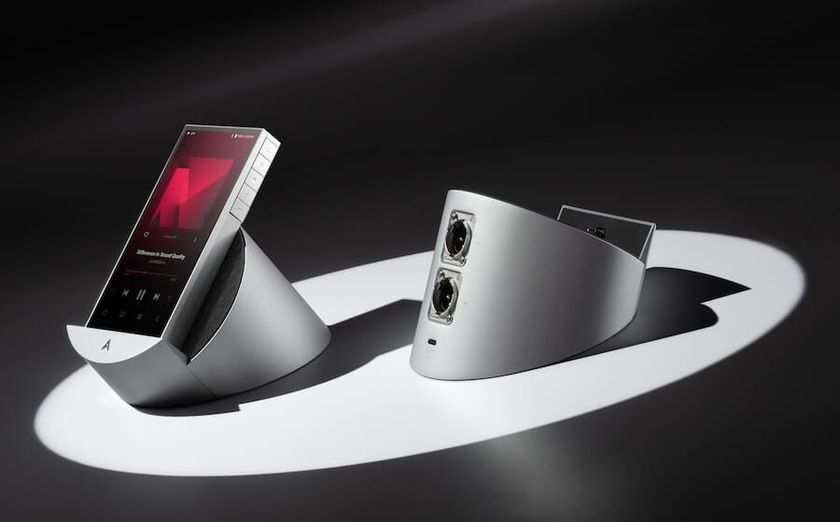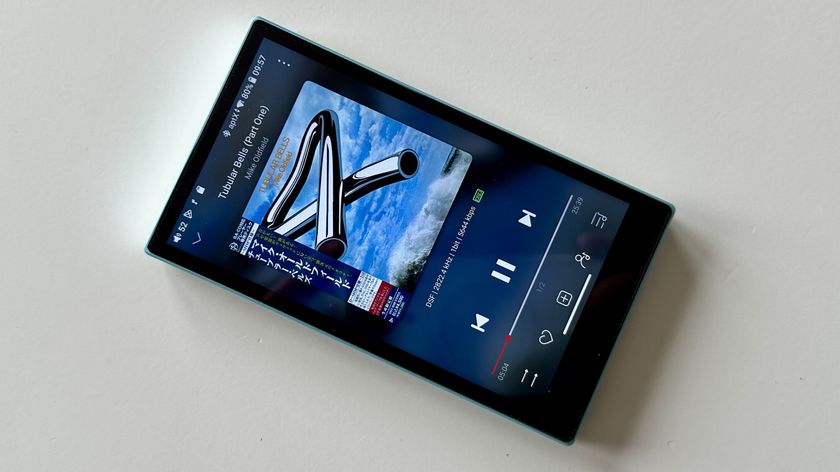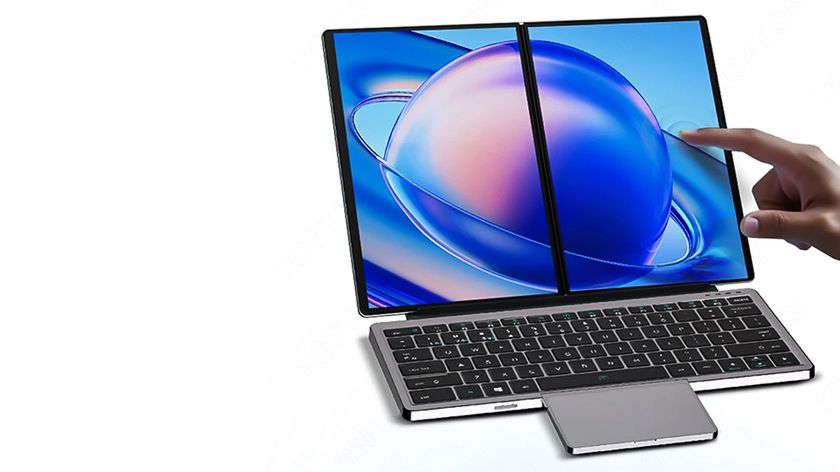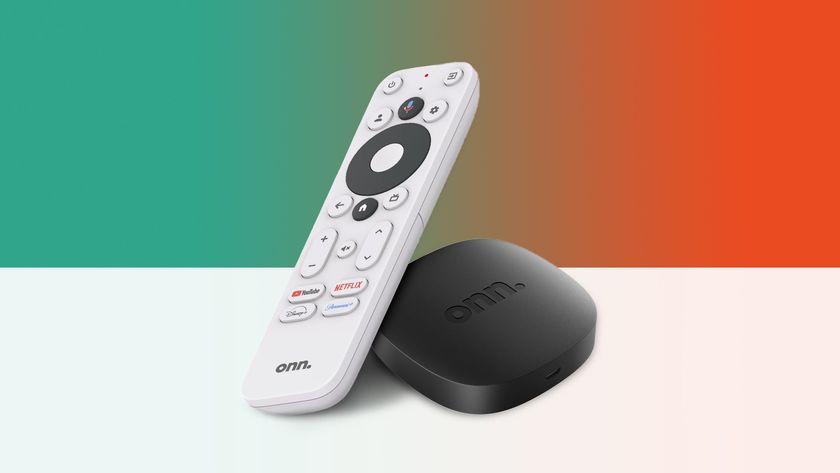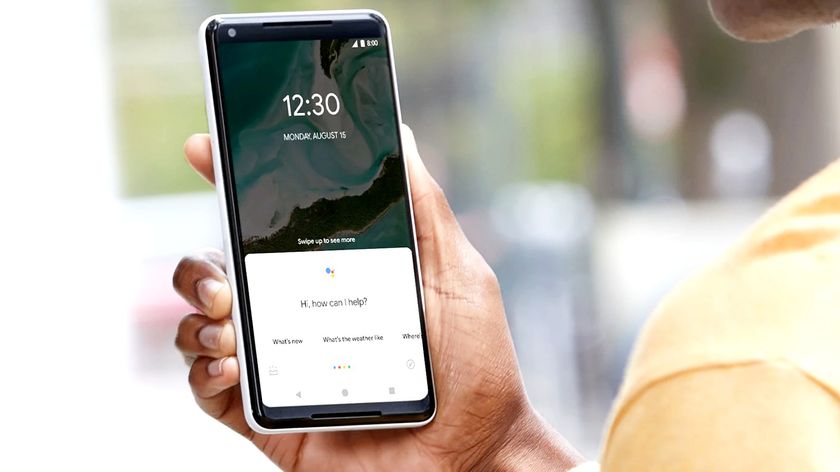Why does the new iPod touch have a headphone jack?
What happened to Lightning?
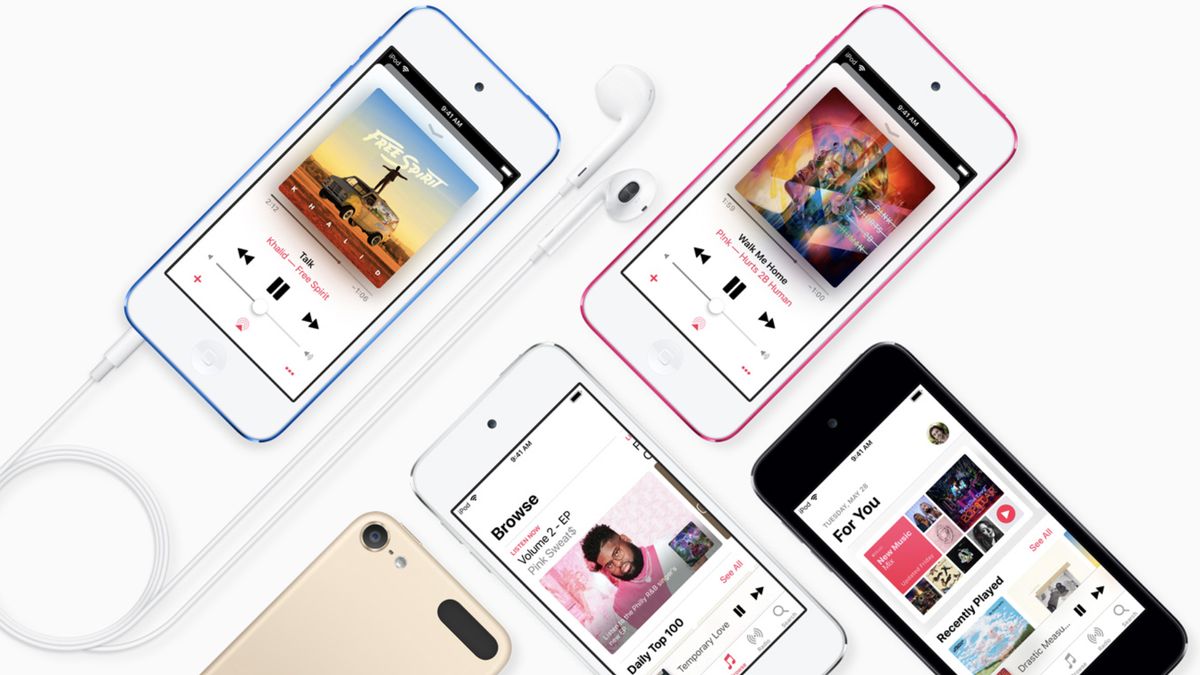
Apple recently took the tech world by surprise with the announcement of a brand new iPod touch – but even more surprising was the revelation that the updated music player features a 3.5mm headphone jack.
Why was this so surprising? Well, Apple stopped including headphone jacks on its smartphones a long time ago in favor of its own multi-purpose Lightning port, with the last jack-friendly models, the iPhone 6S and iPhone SE, being discontinued in 2018.
Despite uproar from consumers at the time, Apple marketing chief Phil Schiller said the firm had been motivated by "courage" to get rid of the headphone jack.
Schiller explained at the 2016 unveiling of the iPhone 7 : "Some people have asked us why we would remove the analogue headphone jack. It's been with us a really long time and it comes down to one word: courage. Our team has tremendous courage."
We speculated at the time that the removal of the headphone jack likely freed up space for extra technologies such as the A10 Fusion processor – the same processor used in the new iPod touch (7th generation).
More recently the lack of a headphone jack, on newer iPhone models like the iPhone XS and iPhone XR, has potentially contributed to the rise of wireless headphones, including Apple’s own AirPods (2019).
We asked Apple for comment but the brand declined. So, having spoken to experts and analysts across the industry, we’ve come up with a few reasons for Apple sticking to the jack in the new iPod touch.
Get daily insight, inspiration and deals in your inbox
Sign up for breaking news, reviews, opinion, top tech deals, and more.
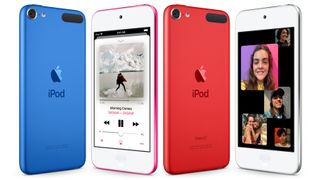
Apple wants to appeal to audiophiles
There are lots of speaker styles to choose from – that's why we've put together lots of guides on the best speakers you can buy in 2019.
Looking for some Hi-Res audiophile speakers to go with your record player? Check out the best stereo speakers. Bored of your TV's lackluster audio? Try one of our best soundbars on for size.
If you need a speaker you can take everywhere, make sure you look at the best waterproof speakers.
For total control of your smart home, invest in one of the best smart speakers, which come with Google Assistant, Amazon Alexa, or Siri built-in.
Audiophiles have a reputation for eschewing any headphones without a wire, and Apple’s inclusion of the headphone jack on the iPod touch could be part of a wider plan to appeal to music lovers.
After all, the new iPod touch supports Hi-Res Audio codecs like FLAC and Apple Lossless, which are capable of reproducing the full range of sound from recordings that have been mastered from better-than-CD quality music sources, a sound that closely replicates the quality that the musicians and engineers were working with in the studio at the time of recording.
Joe Cox, Global Editor-in-Chief of What Hi-Fi? Thinks that the inclusion of the 3.5mm headphone jack in the new iPod touch could be very appealing to audiophiles, partly because wired headphones tend to sound better than their wireless counterparts.
He explains: “Bluetooth would traditionally compress your music files to transmit them wirelessly, reducing the audio quality before it has even reached your headphones.”
While advances in Bluetooth technology, such as aptX HD means that this no longer needs to be the case, Cox explains that, “with all the parts of the audio chain needing to be compatible, and with more processing happening generally, wired headphones do tend to still deliver better sound”.
“That said, you may need to be listening to CD-quality or better audio, such as via Tidal Masters or Deezer HiFi, and with good headphones, to hear the difference,” he adds.
So, by keeping the headphone jack, Apple could tempt those who would normally opt for a Hi-Res portable music player like the Onkyo DP-X1A Digital Audio Player to try out an iPod touch.

But what about headphones that plug into the Lightning port? Apple sells such versions of its classic EarPods, so why wouldn’t they appeal to audiophiles?
According to Cox, these headphones could even provide higher quality audio than traditional models with a 3.5mm jack – but they just aren’t common enough to have truly taken off in the audiophile world.
“The trusty 3.5mm headphone jack takes an analogue signal, which means your digital music has to be turned into analogue by a DAC (digital-to-analogue converter) inside your phone or portable music player.”
“Lightning can feed out analogue or digital audio, with the potential for that digital-to-analogue conversion to be done by a dongle, your headphones or a dedicated DAC. Ultimately, this could mean better sound quality.”
Even so, the likelihood is that most audiophiles will have a pair of 3.5mm headphones at home already. Cox acknowledges as such:“it’s more than a little confusing for consumers, as not every device or dongle will work with every phone or music player.”
So, by including the 3.5mm headphone jack, Apple may well appeal to audiophiles who prefer a wired connection, and don’t already have USB-C compatible headphones. Not only that, but the headphone jack will likely appeal to more casual music listeners as well:
“I think we're still at the stage where not having a 3.5mm headphone jack is just a bit annoying” says Cox. “Not everyone has wireless headphones and even if they do, there are times when you want a wired connection - maybe you have older, more expensive wired headphones or your phone or Bluetooth headphones could be low on battery – and dongles are annoying.”

Apple wants to save money on machinery
There’s one rather more obvious reason for Apple to keep the headphone jack in the iPod touch – to save money.
Design-wise, the new iPod touch looks nearly identical to its predecessor – meaning Apple can use the same machinery it used when making the previous iPod touch model.
According to the specifications available on the Apple website, the new iPod touch sports exactly the same dimensions as the older 6th generation model; it’s the same height, width, depth, and weight, sports a 4-inch display, and crucially, boasts a 3.5mm headphone jack – just like its older sibling.
Building new factory machines costs money, and if Apple is looking to lower costs, it makes sense that it would stick to a tried and tested design – and it wouldn’t be the first time that Apple has employed this tactic.
Wayne Lam, Director and Principal Analyst of Technology, Media, and Telecoms at IHS Markit explained: “This is a similar tactic [to what] Apple used for the new iPad mini: basically updating the platform with more recent application processors since that product has been on the market longer than the life of the key components. “
“Having said that, we haven’t evaluated the cost differences but it would be unlikely that Apple is losing money by replacing old parts with new-ish ones.”
Saving on manufacturing costs could be a compelling reason for the tech giant to keep the headphone jack - and sticking with older designs certainly gives Apple that opportunity.

The iPod touch could be great for kids
Apple says that the new iPod touch provides "fun and productive AR experiences across gaming, education and web browsing", with experiences made even more immersive with the "new capabilities of shared AR, persistent AR, which is tied to a specific location, and image detection", which makes it possible for the new iPod touch to "magically bring to life 3D objects like toys and sculptures."
The emphasis on education suggests that the new iPod touch is meant to be kid-friendly. After all, for parents weighing up the benefits of introducing their kids to the digital world to the potential risks, the iPod touch could represent an attractive middle ground between regular ‘dumb’ phones and a fully connected iPhone.
Without the capacity for mobile data, parents don’t have to worry about kids downloading games over a mobile network and gobbling up expensive data plans with a few swipes, and limiting Wi-Fi access is much easier.
The new iPod’s small size also makes it ideal for watching downloaded content on the go, while support for FaceTime means kids can keep in touch with family members and friends over a Wi-Fi network – for parents who want to keep young minds entertained without giving their children a smartphone, the iPod touch could be an ideal solution.
The inclusion of a headphone jack makes the iPod touch even more appealing to parents, who don’t want to spend money on Lightning headphones, which are often more expensive than their 3.5mm counterparts, or worry about their children losing true wireless models.
Plus, wireless headphones can be tricky to pair, even for adults. Keeping the headphone jack makes the iPod touch as simple to use as possible, and potentially ideal for younger users.
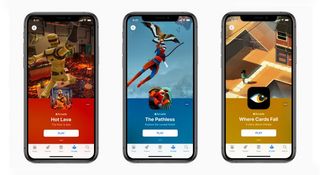
Why would Apple want to appeal to kids with this latest iPod touch? Aside from wanting to compete with kid-friendly devices like the Amazon Fire HD 10 Kids Edition, the brand’s motivation would give access to a new tranche of subscribers to its upcoming game streaming platform, Apple Arcade.
In fact, Apple’s press release for the new portable music player hardly mentioned music at all, instead focussing on the gaming capabilities of the 7th generation iPod touch.
The inclusion of Apple's A10 Fusion chip means that the new iPod touch is optimized for gaming, including what Apple calls, "immersive augmented reality (AR) experiences" – experiences that are likely to come as part of Apple Arcade.
Apple says that the Arcade service will come with "over 100 new and exclusive games with no ads or additional purchases, and the ability to download games for offline play" – and it seems that the company is setting up the new iPod touch as a (relatively inexpensive) way to get access to it.
So, by making the iPod touch accessible for children with the inclusion of a headphone jack, Apple may be hoping to get more tiny hands on its tech – potentially resulting in more parents reaching into their wallets to subscribe to Apple Arcade as children want access to quality titles.

Apple’s changed its mind about Lightning… well, maybe
The least likely reason for Apple keeping the headphone jack is that the company listened to feedback from customers who loathe the now ubiquitous Lightning port and has decided to bring back the jack – starting with the iPod touch.
While extremely unlikely, it could be a popular move; according to a 2017 survey by Yahoo Finance, 71% of iPhone 7 and 7 Plus users wished Apple would bring the headphone jack back to its range of smartphones.
Since then, we’ve seen the iPhone 8, the iPhone XS, and the iPhone XR – all of which feature a Lightning port, but no option to plug in 3.5mm headphones..
And, with no indication that Apple will be reintroducing the headphone jack to its iPhones and iPads, we wouldn’t count on the jack making a return to any other Apple devices.
After all, we’ve seen how Apple tends to stick to its rigid aesthetic in the upgraded Apple AirPods (2019), which didn’t change in terms of design, despite criticism of their long, protruding stems, and inflexible earbuds.
It’s far more likely that Apple’s decision to keep the headphone jack in the new iPod touch was down to a desire to keep manufacturing costs down, while also appealing to kids who are unlikely to get on with wireless headphone models – after all, children will probably make up a large number of Apple Arcade users when it launches, and providing them with an accessible device like the iPod touch could be a good way of ensuring plenty of subscribers from the outset.
- Apple Arcade release date, price info, and everything you need to know
Olivia was previously TechRadar's Senior Editor - Home Entertainment, covering everything from headphones to TVs. Based in London, she's a popular music graduate who worked in the music industry before finding her calling in journalism. She's previously been interviewed on BBC Radio 5 Live on the subject of multi-room audio, chaired panel discussions on diversity in music festival lineups, and her bylines include T3, Stereoboard, What to Watch, Top Ten Reviews, Creative Bloq, and Croco Magazine. Olivia now has a career in PR.

